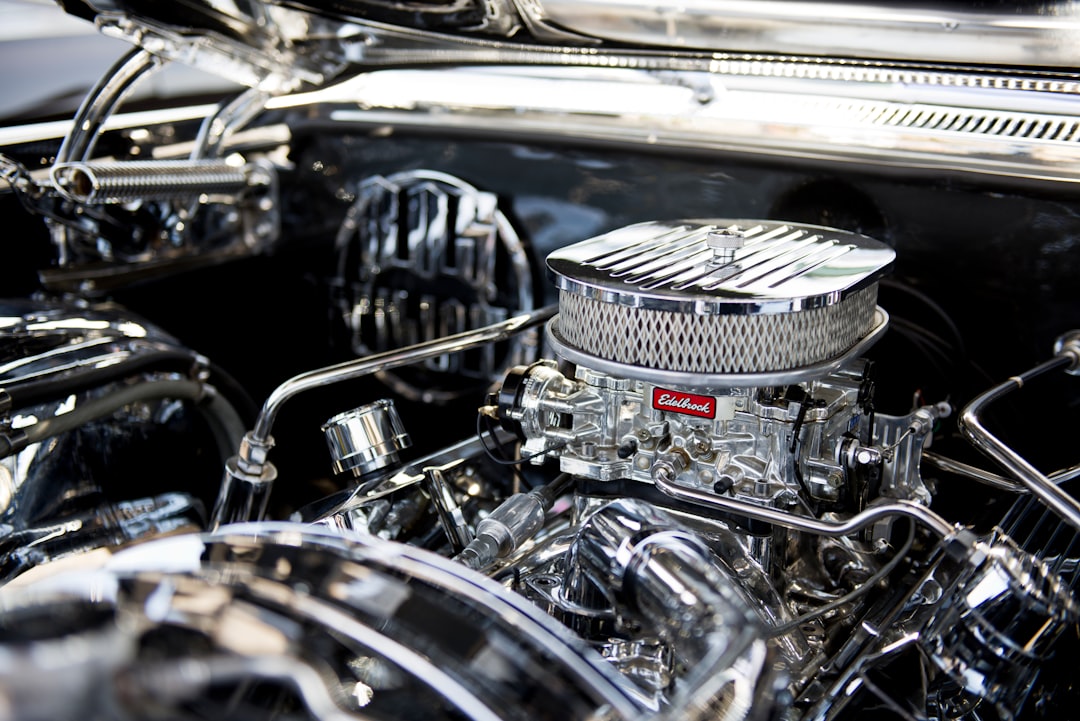Step-by-Step Guide to Wiring a Starter Solenoid

The starter solenoid is a crucial component in a vehicle’s starting system. It is responsible for transmitting electrical current from the battery to the starter motor when the ignition key is turned. The solenoid acts as a switch that engages the starter motor’s pinion gear with the flywheel of the engine, allowing the engine to crank and start. Without a functioning starter solenoid, the vehicle will not be able to start, making it an essential part of the vehicle’s overall operation.
The starter solenoid is typically located near the starter motor and is connected to the vehicle’s battery and ignition switch. When the ignition key is turned, an electrical signal is sent to the solenoid, which then activates an electromagnetic coil. This coil creates a magnetic field that pulls a plunger or lever, connecting the high-current battery cable to the starter motor. This action allows the starter motor to draw power from the battery and engage with the engine’s flywheel, initiating the starting process. Understanding how the starter solenoid functions is essential for anyone looking to install, replace, or troubleshoot this component in their vehicle.
Gathering the Necessary Tools and Materials
Before beginning any work on the starter solenoid, it is essential to gather all the necessary tools and materials. Some of the basic tools required for this task include a socket set, wrenches, wire cutters, wire strippers, electrical tape, and a multimeter for testing electrical connections. Additionally, it is important to have a new starter solenoid on hand if the intention is to replace the existing one.
In terms of materials, it is crucial to have the appropriate gauge of electrical wire for connecting the solenoid to the battery and starter motor. It is also important to have a wiring diagram or schematic for the specific vehicle make and model being worked on. This will ensure that the correct wiring connections are made and that the starter solenoid is installed properly. By gathering all the necessary tools and materials beforehand, the installation or replacement process can be carried out smoothly and efficiently.
Identifying the Correct Wiring Connections
Identifying the correct wiring connections is crucial when working with a starter solenoid. The solenoid will have several terminals for connecting various wires, and it is important to understand which wires go where to ensure proper functionality. Typically, a starter solenoid will have terminals labeled “S,” “R,” “I,” and “C.” The “S” terminal is for the wire coming from the ignition switch, the “R” terminal is for the wire leading to the ignition coil, the “I” terminal is for the wire from the ignition resistor, and the “C” terminal is for the wire from the starter motor.
It is important to consult a wiring diagram specific to the vehicle make and model being worked on to ensure that the correct wires are connected to the corresponding terminals on the starter solenoid. Making a mistake in wiring connections can lead to starting issues or even damage to the vehicle’s electrical system. By carefully identifying and understanding the correct wiring connections, one can ensure that the starter solenoid functions as intended.
Step-by-Step Wiring Process
| Step | Description | Time Required |
|---|---|---|
| 1 | Gather necessary tools and materials | 10 minutes |
| 2 | Turn off power to the circuit | 5 minutes |
| 3 | Strip the insulation from the wires | 15 minutes |
| 4 | Connect the wires using wire nuts | 20 minutes |
| 5 | Secure the wires with electrical tape | 10 minutes |
The wiring process for a starter solenoid involves several steps to ensure proper installation and functionality. The first step is to disconnect the vehicle’s battery to prevent any electrical accidents while working on the solenoid. Once the battery is disconnected, the old solenoid can be removed by disconnecting the wires attached to its terminals and unbolting it from its mounting location.
Next, it is important to compare the new solenoid with the old one to ensure that they are identical in terms of terminal layout and mounting configuration. Once this is confirmed, the new solenoid can be bolted into place and the wires can be connected to their respective terminals according to the wiring diagram for the specific vehicle make and model.
After all the wires are connected, it is important to double-check each connection to ensure that they are secure and properly insulated with electrical tape. Once everything is in place, the vehicle’s battery can be reconnected, and a final inspection can be carried out to ensure that everything looks correct and secure. Following a step-by-step wiring process will help ensure that the starter solenoid is installed correctly and ready for testing.
Testing the Starter Solenoid
After installing or replacing a starter solenoid, it is important to test its functionality before attempting to start the vehicle. One way to test the solenoid is by using a multimeter to check for continuity between its terminals. This can be done by setting the multimeter to measure resistance and touching its probes to each of the solenoid’s terminals. If there is continuity between certain terminals when there should not be, or if there is no continuity when there should be, it may indicate a faulty solenoid that needs to be replaced.
Another way to test the starter solenoid is by using jumper cables to bypass the ignition switch and directly apply power from the battery to the solenoid’s “S” terminal. This can be done by connecting one end of a jumper cable to the positive terminal of the battery and touching the other end to the “S” terminal on the solenoid while someone else turns the ignition key. If this causes the starter motor to engage and crank the engine, it indicates that the solenoid is functioning properly.
Testing the starter solenoid is an important step in ensuring that it has been installed correctly and is ready for use. By following proper testing procedures, any potential issues with the solenoid can be identified and addressed before attempting to start the vehicle.
Troubleshooting Common Issues

Despite careful installation and testing, issues with a starter solenoid may still arise. One common issue is a clicking sound when attempting to start the vehicle, which may indicate a faulty solenoid or poor electrical connections. In this case, it is important to check all wiring connections to ensure they are secure and free of corrosion or damage. It may also be necessary to test the solenoid’s functionality using a multimeter or jumper cables as previously described.
Another common issue with starter solenoids is intermittent starting problems, where the vehicle may start sometimes but not others. This can be caused by worn contacts within the solenoid or loose connections. In such cases, it may be necessary to disassemble the solenoid and inspect its internal components for wear or damage. If worn contacts are found, they may need to be replaced, or in severe cases, a new solenoid may be required.
By troubleshooting common issues with a starter solenoid, it is possible to identify and address any problems that may arise after installation or replacement. This ensures that the vehicle’s starting system operates reliably and consistently.
Safety Precautions and Final Checks
When working with a starter solenoid or any electrical components in a vehicle, it is important to observe safety precautions to prevent accidents or injuries. Always disconnect the vehicle’s battery before working on any electrical components to avoid electrical shocks or short circuits. Additionally, it is important to handle electrical connections with care and ensure that all wires are properly insulated with electrical tape to prevent accidental contact with metal surfaces.
After installing or replacing a starter solenoid, it is important to perform final checks to ensure everything has been done correctly. Double-check all wiring connections and ensure they are secure and properly insulated. Test the functionality of the solenoid using a multimeter or jumper cables as previously described to confirm that it engages properly when power is applied.
By observing safety precautions and performing final checks, one can ensure that their work on the starter solenoid has been carried out safely and effectively. This will help prevent potential issues and ensure that the vehicle’s starting system operates reliably.
Looking to learn more about wiring a starter solenoid? Check out this informative article on howtostart.digital for step-by-step instructions and expert tips. Whether you’re a beginner or an experienced DIY enthusiast, this resource will guide you through the process with clarity and precision. Don’t miss out on the valuable insights provided in this article!
FAQs
What is a starter solenoid?
A starter solenoid is a small cylindrical device that is responsible for transmitting electrical current from the battery to the starter motor when the ignition key is turned.
Why is it important to wire a starter solenoid correctly?
Wiring a starter solenoid correctly is important because it ensures that the electrical current is transmitted properly from the battery to the starter motor, allowing the engine to start smoothly.
What are the common steps to wire a starter solenoid?
The common steps to wire a starter solenoid include connecting the positive battery cable to the large terminal on the solenoid, connecting the starter motor wire to the smaller terminal, and connecting the ignition switch wire to the remaining small terminal.
What tools are needed to wire a starter solenoid?
The tools needed to wire a starter solenoid typically include a wrench or socket set to loosen and tighten the terminal nuts, wire cutters/strippers to prepare the wires, and electrical tape or heat shrink tubing to secure the connections.
What are the potential risks of wiring a starter solenoid incorrectly?
Wiring a starter solenoid incorrectly can lead to electrical issues, such as a failure to start the engine, damage to the starter motor, or even a risk of electrical fire. It is important to follow the manufacturer’s instructions and wiring diagram to avoid these risks.





